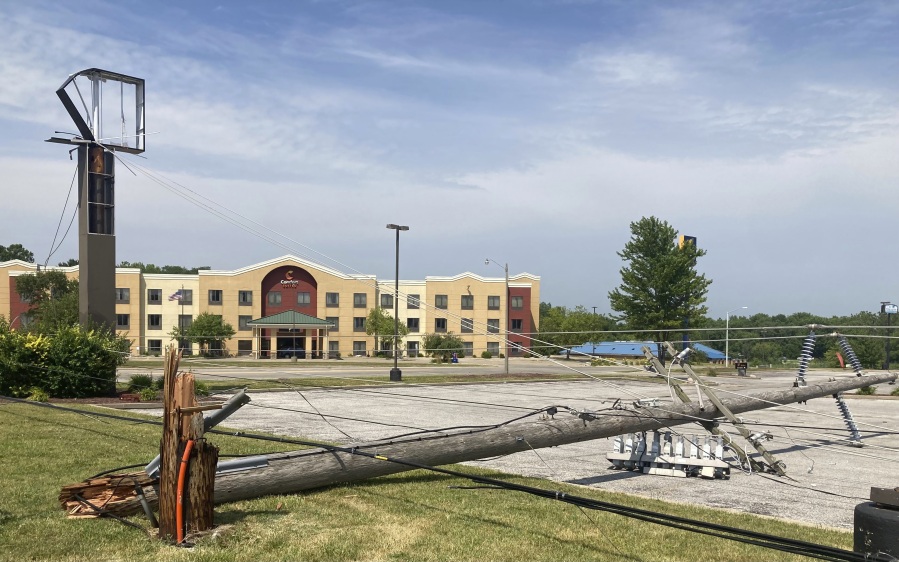INDIANAPOLIS — Smoky haze, hot weather and powerful storms brought dangerous and uncomfortable conditions to parts of the U.S. heading into a long July Fourth weekend that typically draws Americans to outdoor gatherings.
From heat waves in the South and West to unhealthy air quality in the Northeast, much of the U.S. was under the threat of extreme weather. In the Midwest, some residents Friday were recovering from a powerful storm that moved through Illinois and Indiana a day earlier packing winds that reached more than 70 mph.
That storm damaged trees and buildings in the central parts of both states from the Mississippi River to the Indianapolis area. Crews worked to replace electrical lines entangled in downed trees ahead of more expected thunderstorms and temperatures climbing to around 90 degrees. Utility companies reported that more than 250,000 homes and businesses were still without electricity.
Brian Alexander, 55, swept up debris from the front yard of his home in Springfield, Ill. Tree limbs that fell on his car left several small dents.
“Very lucky on that,” Alexander said. “No power, but we’ll manage. We’re just waiting for the city to get us hooked up again, and we’ll get everything cleaned up.”
The National Weather Service said the storm was a derecho, which is often described as an inland hurricane because of its line of strong winds stretching for hundreds of miles.
“We had damage all the way from northeast Kansas, all the way down into Kentucky and across Indiana,” said John Bumgardner, a meteorologist with the National Weather Service in Illinois.
In the South, a heat wave that has been blamed for the deaths of at least 14 people was expected to last into the weekend in some areas. Parts of Tennessee, Arkansas and Mississippi were under excessive heat warnings Friday as heat indexes rose above 110 degrees in some places.
In Memphis, Tenn., officials said relief efforts were focused on the thousands of people who still had no power after storms Sunday that knocked down trees and power lines. In Nashville, residents and tourists alike tried to keep comfortable as temperatures climbed toward the upper 90s.
Leo Bennett, an employee of the county sheriff and at a private traffic-control company, said he prepares for long days outside by drinking several bottles of water and packing a cooler.
“One of my secrets is the pickle juice,” Bennett said. “I bring pickle juice to keep from cramping up.”
At a park just outside downtown, teenage baseball players participated in a tournament and used cold towels between innings to cope with the heat. Coach Jordan Sheffield said he planned to pick up a fan for the dugout.
“You can kind of see it on their face, really. The red face a lot. A lot more of them red faced,” said Sheffield. “A lot of hands on their knees, things like that. So I kind of keep an eye on that and just try to keep them as cool as possible.”
The EPA warned Friday that parts of Pennsylvania, New York, New Jersey and Connecticut could experience “unhealthy” air conditions because of ongoing wildfires in Quebec and northern Ontario.
“The primary concern is high concentrations of fine particle air pollution,” the agency said.




